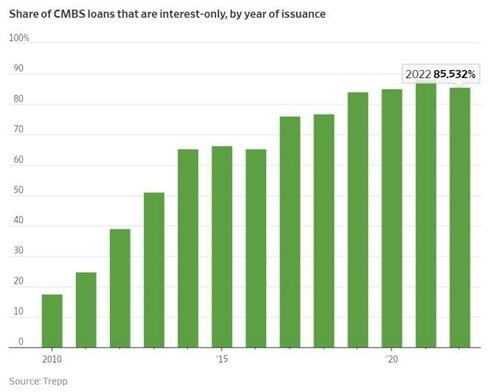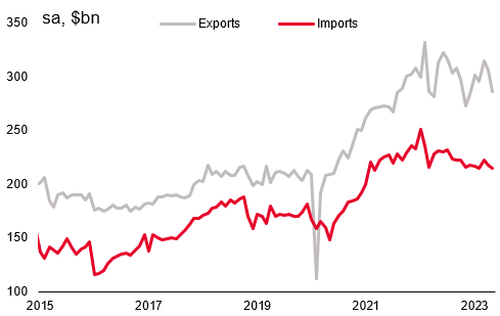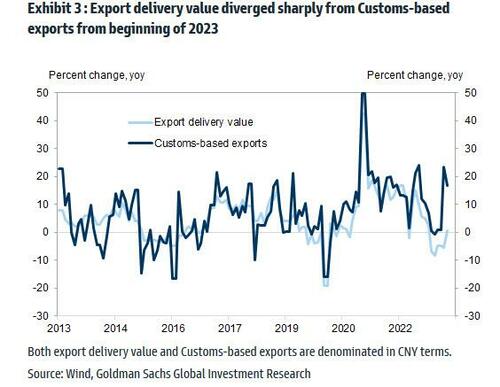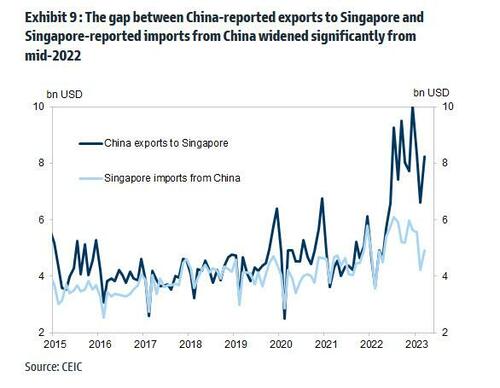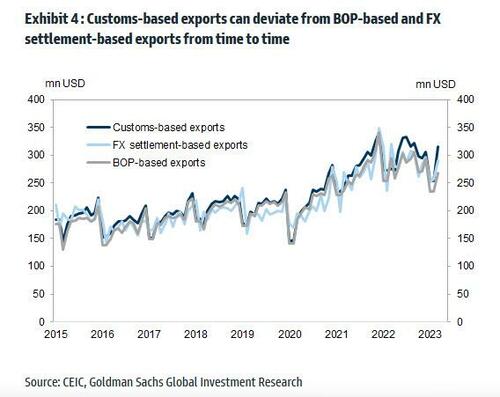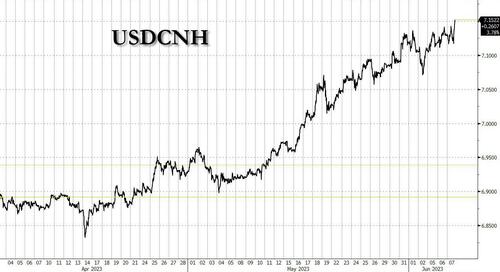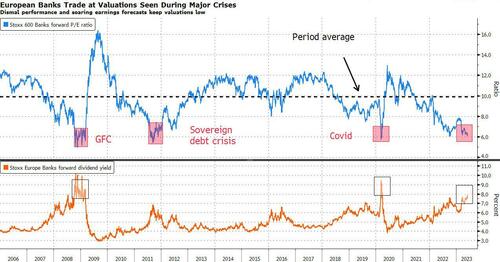A third of the way through Regime Change (Sentinel), a table appears. The top two quadrants are “Progressive Liberal” and “Classical Liberal.” The lower left is “Marxist.” The lower right is blank.
That open spot will soon be filled by the author’s proposed alternative. Like Marxism, he says, his approach is “deeply critical of the resulting alienation of humans from the fruits of their labor, from knowledge of how their work contributed to a common good, and from each other.” But unlike Marxism, this system is fundamentally conservative rather than revolutionary, prizing stability, continuity, and order above all. It is economically leftist, socially reactionary, and unapologetically anti-liberal.
Students of history may be relieved to hear that University of Notre Dame political scientist Patrick Deneen is not—despite what the schematic just described might suggest—arguing for fascism. Instead, the fourth quadrant represents what he refers to throughout the book as “common-good conservatism.”
Deneen, who taught at Princeton and Georgetown before landing at Notre Dame, is one of the more prominent intellectuals on what is often called the New Right. He’s best known for articulating the idea that liberalism—not just the modern political faction but the broad philosophical tradition emphasizing individual liberty, limited government, personal responsibility, and the rule of law—has failed America. An earlier book of his on that subject even appeared on former President Barack Obama’s reading list in 2018. Today, along with Harvard Law School professor Adrian Vermeule and a couple of lesser-known academics, he pens the Postliberal Order newsletter, which explores the system they hope will eventually take liberalism’s place.
Given Deneen’s influence, the incredible sloppiness of the writing in Regime Change is a surprise. Many of his sentences are ambiguous if not incomprehensible, many of his paragraphs internally contradictory. There are places where the literal meaning of the words on the page are precisely opposite to what he plainly intends to convey. (When he says that it was “not uncoincidental” that two related things coincided, I doubt he means they happened together merely by chance.)
Even going to great lengths to puzzle out the strongest versions of the arguments Deneen seems to be making will get the reader only so far. Every one of his major claims disintegrates under scrutiny. You’re left with the impression that he barely understands his own ideas, and that he misunderstands entirely the thing he’s arguing against.
Deneen’s case rests almost entirely on the idea that left-progressive liberalism and classical liberalism, far from representing opposing worldviews, are in fact “identical, monolithic, and eager to deploy power in the name of enforcing individual expressivism.” What unites them, he says, is a commitment to unrelenting progress. Classical liberals (including many American conservatives) might emphasize economic dynamism, innovation, and wealth creation, while progressives are focused on liberating people from lifestyle constraints by clearing away what they see as outdated social institutions such as religion and the traditional family. But Deneen thinks these are really two sides of the same coin. Liberalism is progressivism, full stop.
What’s more, he argues, upper-class members of the two camps have secretly combined to form a “power elite” or “party of progress,” which perpetuates its position by demolishing the legal and social “guardrails” that once allowed regular people to flourish. “Primary [to liberalism] was a belief in self-making,” he writes, “demanding a social order that allowed the greatest possible freedom—even liberation—from unchosen commitments.”
Somewhere in here, there is arguably a fair critique. Markets really are disruptive, and those disruptions really do have costs. Community ties may be weakened, for instance, when people marry later, have fewer children, and settle at a distance from extended family members and close friends. Most people benefit from a growing economy, but the benefits are never equally disbursed. Dizzying change can be destabilizing.

But Deneen is not satisfied with the suggestion that liberalism has negative side effects; he insists the destruction wrought by liberalism is the point. “Modern thought rests on a core assumption: transformative progress is a key goal of human society,” he says. Liberalism “is a revolutionary doctrine that aims at the constant transformation of all aspects of human social organization,” he says. Its “aim,” he says, is “unceasing instability.”
This is a wild claim—not just uncharitable but entirely unsubstantiated in the text. It evinces little familiarity with the theoretical underpinnings of liberalism, which, as the name conveys, gives pride of place to liberty, not progress. And while classical liberals may have a higher degree of tolerance for creative destruction than Deneen does, it’s rare to find one who desires social upheaval for its own sake, particularly among the classically liberal conservatives who are Deneen’s philosophical rivals.
Just how “identical” and “monolithic” are progressives and classical liberals, anyway? Deneen’s own description of the liberal/progressive power elite includes four key characteristics, half of which don’t even apply to classical liberalism.
First, he notes that the new elites are “managerial,” or members of what is sometimes called the laptop class. Second, he says “this class arose specifically in opposition to…the old aristocracy” and is thus “fiercely opposed both to the principle of hierarchy and the inheritance of status.” (This despite being at the top of America’s social and economic hierarchy.)
Third, Deneen says elites use tyrannical identity politics to demonstrate their commitment to egalitarian principles without actually having to do anything to help the less well-off. Through claims of subjective harm (think of microaggressions), “the ruling elite seeks to limit and even oppress or extirpate remnants of traditional belief and practice—those especially informing the worldview of the working class—while claiming that these views are those of the oppressors.” Imagine how students at a top-ranked college would react to a speaker saying there are only two genders and you’ll get the picture.
Finally, he says, “the main locus through which today’s elite exercises control” is not the state. It’s through centers of cultural production such as academia and Hollywood, as well as through woke corporate governance.
Do either of those last two features sound like they apply at all to classically liberal conservatives and libertarians? Of course not. The power elite described above is obviously not a melding of left- and right-liberalism. This is a garden-variety complaint about left-progressives.
In fact, classical liberals have been on the front lines of the fight against Deneen’s third characteristic, which they recognize as a product of illiberal progressivism. Public interest law firms such as the Foundation for Individual Rights and Expression defend religious liberty and free speech against militant political correctness. For that matter, libertarians are practically obsessed with eliminating occupational licensing and similar barriers that make it hard for people outside the laptop class to make a living on their own terms.
Another big idea in Regime Change is that different regime types are characterized by the way the people relate to the elites. Marxism, he writes, sees the masses as inherently revolutionary and wants them to have power, overthrowing the bourgeois upper class violently if need be. Technocratic progressivism, on the other hand, sees the people as inherently conservative and wants progress-oriented technocrats to rule over the masses, tyrannically if necessary. Common-good conservatism, Deneen’s preferred system, agrees with the progressives that the people are naturally conservative and agrees with the Marxists that the people should be in control.
Or does it? Actually, this is one of the many things about which Deneen can’t make up his mind. Initially, he says both Marxism and conservatism favor the people over elites. Later, he admits political movements always “claim to speak in the name of ‘the people’ against an elite that seeks to oppress and circumvent the popular will” while really empowering an elite to do the governing. But while “Marxist strains sought to deny their reliance upon elites,” he writes, conservatism has at least been open about its belief that the people need good elites to support them. Except—wait—one sentence later he reverses himself again, now saying that “conservatives have been generally unwilling to make explicit the claim” that elites are necessary to their vision.
Eventually, Deneen rolls out the concept of a “mixed regime,” which for some reason he decides to call a “mixed constitution.” This is the goal of common-good conservatism, he says: a system in which the elites don’t have to dominate the people and the people don’t have to overthrow the elites, because the people and the elites are conveniently aligned. (Assume a harmony of interests, and most of the challenges of governance disappear!)
According to the Greek historian Polybius, ancient Rome had a mixed constitution. Instead of choosing between the rule of one (monarchy), the rule of the few (oligarchy), or the rule of the many (democracy), it combined all three. “The benefits of kingship were manifested in the unitary rule of the emperor,” Deneen summarizes, “but the tendency of the monarch to become overbearing and tyrannical was restrained by the political power of the common citizens. They in turn were ennobled by the aristocracy—gathered in the Senate—who in turn were balanced by the other elements of the government.” In theory, this “mixing” will produce the sought-after alignment between the people and the elites.
At this point, you may be wondering what distinguishes the modern American regime from what Polybius is describing. After all, we have universal suffrage (rule of the many) paired with a Senate and “expert”-staffed bureaucracy (rule of the few) and a unitary president (rule of one). But if we already have a mixed constitution, to what does this book’s titular “regime change” refer?
It seems that a true mixed constitution isn’t just a system in which the few and the many share governing responsibilities. A true mixed constitution is one in which the few, like the many, are in wholehearted political agreement with Deneen. “The answer,” he writes, “is not the elimination of the elite (as Karl Marx once envisioned), but its replacement with a better set of elites”—that is to say, a governing cohort that prioritizes conservative values such as stability and order. “Existing political forms can remain in place,” he writes, “as long as a fundamentally different ethos informs those institutions and the personnel who populate key offices and positions.”
Deneen wants conservative views to be “the price of admission to elite status itself,” with people fearing that “not conforming to the regnant ethos” will disqualify them from positions of power (emphasis his). But those are wishes, not plans. How does one bring about such a “regnant ethos” where it clearly does not exist? The closest he comes to an answer—”the raw assertion of political power by a new generation of political actors inspired by an ethos of common-good conservatism”—raises at least as many questions as it resolves.
Even when he finally turns to policy, Deneen seems oblivious to the distinction between structural reforms that might theoretically help bring about a greater alignment between the people and the elites, on the one hand, and the kinds of ideologically conservative policies that his side would already need to hold power in order to implement.
The book calls, for instance, for dramatically increasing the number of U.S. House districts so each member of Congress represents fewer constituents; for “breaking up” D.C. by moving the federal agencies to other parts of the country; and for switching from primaries to caucuses. These are the sorts of suggestions around which it might be possible to build a transpartisan consensus on good-government grounds, and which might then lead to reduced estrangement between the upper and working classes (although Deneen couldn’t be bothered to make those arguments explicit).
But Deneen’s agenda also includes socially reactionary ideas (“renewed efforts to enforce a moral media”) and half-baked industrial policy (“domestic manufacturing in certain sectors should simply be mandated”). Often, his own means and ends aren’t even aligned. At one point, he names as a goal that “university education could be substantially reduced” and then, in the same paragraph, asserts that “vocational schools or tracks ought to be supplemented by required introductory courses in a university-level general education”—a proposal that would force people who want to pursue careers in the trades back into the classroom.
Deneen’s arguments frequently fall apart in just this way. Near the end of the book, he makes the case that a hallmark of liberalism is “separation” (e.g., between church and state) while a hallmark of conservatism is “integration.” Of course, economic liberalism includes a default commitment to allowing goods and people to flow across borders. Deneen waves this away, writing that “the ultimate logic” of globalization is “disintegration, the weakening and outright elimination of all cultural, geographic, traditional forms of membership,” apparently hoping readers won’t notice that the barriers to trade and immigration that he supports are ways of keeping us forcibly separated.
The thing Deneen most takes for granted in this book is also the thing his entire argument turns on: an assumption that the American people are ideologically with him, and that their democratic power can thus be used to force “an ennobling” of the elite.
That the masses are with them is also, you’ll recall, an assumption of Marxists, who are continuously discovering that they’ve deluded themselves on that point. Deneen knows as much, writing that “false consciousness among the proletariat about what they should really want and how they should authentically act” forced Marx to turn his hopes “to the cultivation of a revolutionary elite….The people were simply not good enough for the anticipated utopia—and would have to be pressed into its service if they refused to follow the playbook.”
Yet the possibility that he too could be wrong about what the public wants does not appear to have occurred to Deneen. He treats as a given that the U.S. is undergoing a political realignment that will pit the liberal party of progress against a much larger conservative party that will be socially traditionalist but economically of the left.
There is indeed some evidence for a partisan realignment based on educational attainment. Much harder to believe is that the new conservative coalition supports anything like what Deneen has in mind. Many observers assumed that Donald Trump’s success was a sign that the American working class had rejected economic liberalism, for example, but an Ethics and Public Policy Center survey taken after the 2020 election found that just 35 percent of Trump’s own voters thought the United States should reduce foreign trade.
The “Barstool conservative” phenomenon identified by journalist Matthew Walther suggests that Deneen would have trouble building a consensus for his social agenda as well. Yes, people are ticked off about woke overreach by the progressive left. But the idea that most Americans favor a crackdown on pornography or a reintroduction of Sabbath laws or any of Deneen’s other post-liberal fantasies is comical.
Interestingly, some of his associates on the New Right accept what Deneen is in denial about. His co-blogger Vermeule has called for a small number of activists, who may represent only “a tiny minority of the population,” to reshape the culture from the top down by, say, obtaining positions within the administrative state. “It is a useless exercise to debate whether or not this shaping from above is best understood as coercive,” Vermeule has written, “or rather as an appeal to the ‘true’ underlying preferences of the governed.” All that’s missing is a reference to false consciousness.
Perhaps Deneen’s least defensible claim is that liberalism, like progressivism, is a philosophy that wants the elites to rule over the masses. As if brandishing a trump card, he observes that classical liberals are “suspicious of majoritarian democracy” and supportive of “constitutional constraints” that “insulat[e] the economically successful few from the average and ‘querulous’ many.” Yet he also admits that liberalism developed in opposition to the aristocracy, an arrangement under which the few held all the political and economic power.
Sure, liberals worry about tyranny of the majority. That doesn’t mean they favor tyranny of the minority. The liberal throughline is a desire to stop either from dominating the other, a goal liberalism seeks to accomplish by limiting the power of the state through which both groups are tempted to exert control.
Contrary to Deneen’s clever schematics, liberalism is not about empowering the few vs. the many; it’s about empowering the individual vs. the collective. Classical liberals think people, whatever their station, should get to make as many decisions as possible for themselves. Instead of a government—whether elite-dominated or mass-dominated—imposing its vision of the common good on us, we should all have the freedom to decide what a good life looks like and how best to pursue it.
The post Liberalism Isn't Rule by Elites appeared first on Reason.com.
from Latest https://ift.tt/zEWwao8
via IFTTT
